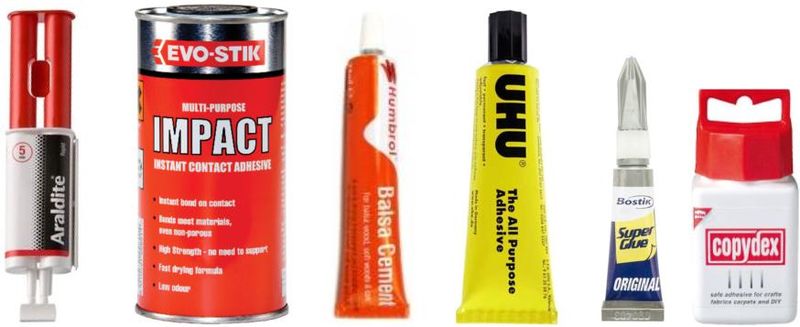Adhesive Types: Difference between revisions
From DT Online
m (Removed horizontal line) |
m (DT Online moved page Adhesives Types to Adhesive Types without leaving a redirect: Correct spellling) |
(No difference)
| |
Revision as of 11:58, 28 October 2014
Surfaces which have been painted or varnished, or materials such as plastics which are not porous, do not glue well with water-based glues and pastes. In these situations, a solvent-based or other adhesive which is set by a chemical reaction might be appropriate.
Safety Point! Take great care with solvent-based adhesives. They can be flammable and their fumes can cause harm. They are difficult to remove and some will stick skin together.
Multi-part adhesives, such as ‘Araldite’ epoxy resin, are very good for binding non-porous materials such as plastics, ceramics, glass and metals. Epoxy resins are used to bind parts of aircraft together!
Contact adhesives, such as ‘Evostick’ or ‘Thixofix’, are good at bonding two surfaces together such as when applying a plastic laminate to a worksurface. The two surfaces are first coated with adhesive then left to dry for 10mins after which they will bond together almost instantaneously.
Balsa Cement is designed for use when modelling with balsa wood but in most circumstances PVA wood glue will suffice.
Cyanoacrylate adhesives, or ‘super glue’, will bond almost any material instantly - including skin so great care must be taken. Acetone, readily available as nail varnish remover, can be used to soften it once cured, if need be.
‘Copydex’ is a latex-based adhesive which is relatively non-toxic and safe to use. It is used mainly for gluing fabrics and textiles together.
